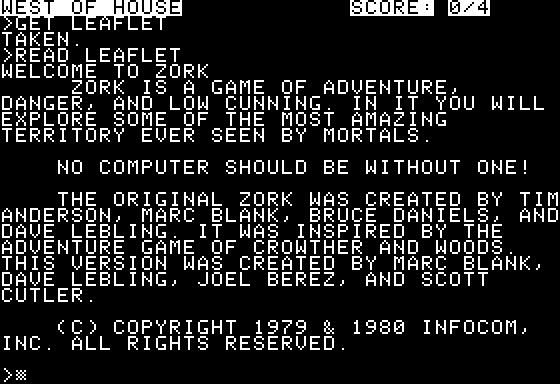94
In the 1980s, first arcade games and then video and computer games began to exploit three-dimensional graphics and so to define a space that could be continuous with the user. Designers could then make the games remediate not only the monitoring function of all video, but also the narrative functions of television and film. An early example was Dragon’s Lair, which contained short segments of lined video (Herz 1997, 147). Arcade games and video games have nor exploited the possibilities of interactive narrative as have computer games, however, probably because the arcade and the living room are too public and noisy. Interactive narrative games favor a single user with the time and the solitude to solve puzzles and make choices. These more thoughtful games remediate film rather than video.
In the 1980s, first arcade games and then video and computer games began to exploit three-dimensional graphics and so to define a space that could be continuous with the user. Designers could then make the games remediate not only the monitoring function of all video, but also the narrative functions of television and film. An early example was Dragon’s Lair, which contained short segments of lined video (Herz 1997, 147). Arcade games and video games have nor exploited the possibilities of interactive narrative as have computer games, however, probably because the arcade and the living room are too public and noisy. Interactive narrative games favor a single user with the time and the solitude to solve puzzles and make choices. These more thoughtful games remediate film rather than video.
Zork: The Great Underground Empire - Part I
Author: Tim Anderson,Marc Blank,Dave Lebling,Bruce Daniels
Year: 1980 Edit Add
Book: Remediation
Zork: The Great Underground Empire - Part I
Author: Tim Anderson,Marc Blank,Dave Lebling,Bruce DanielsYear: 1980 Edit Add
Book: Remediation
Graphic, role-playing computer games derive their narrative structure from earlier textual games (Zork and similar adventure games), which themselves come from fantasy literature, such as Tolkien's The Lord of the Rings.Their visual tradition is that of three-dimensional graphics and ultimately, therefore, the tradition of realistic, perspective painting. Such games seek the real, sometimes through transparency and sometimes through hypermediacy- sometimes by encouraging the player to look through the surface of the screen and sometimes by dwelling on the surface with its multiplicity of mediated objects. This combination is what makes Tolkien's trilogy such an attractive model for game designers and players. Although the books describe a world of fantastic events and characters with a photorealistic attention to detail, the text calls attention to itself with its antiquated prose and poetry.
Graphic, role-playing computer games derive their narrative structure from earlier textual games (Zork and similar adventure games), which themselves come from fantasy literature, such as Tolkien's The Lord of the Rings.Their visual tradition is that of three-dimensional graphics and ultimately, therefore, the tradition of realistic, perspective painting. Such games seek the real, sometimes through transparency and sometimes through hypermediacy- sometimes by encouraging the player to look through the surface of the screen and sometimes by dwelling on the surface with its multiplicity of mediated objects. This combination is what makes Tolkien's trilogy such an attractive model for game designers and players. Although the books describe a world of fantastic events and characters with a photorealistic attention to detail, the text calls attention to itself with its antiquated prose and poetry.
 Source type: picture
Source type: pictureInfo: Zork: The Great Underground Empire - Part I, later known as Zork I, is an interactive fiction video game written by Marc Blank, Dave Lebling, Bruce Daniels and Tim Anderson and published by Infocom in 1980.
Original size: 560x384 px. Edit
The elements of immediacy and hypermediacy combine to create an effect that many computer game designers have consciously or unconsciously imitated. This is the case with the extraordinarily popular and influential Myst, which is compelling because it simultaneously remediates several media on several levels (cf. Smith forthcoming). Myrt combines three-dimensional, static graphics with text, digital video, and sound to refashion illusionistic painting, film, and, somewhat surprisingly, the book as well. Almost certainly without the conscious intent of its authors, Myst turns out to be an allegory about the remediation of the book in an age of digital graphics. The logic of immediacy requires that the acts of mediation be concealed, and Myst is about concealment, about hidden puzzles whose solutions open up new graphic worlds and bring the player closer to solving the mystery of the father and his two sons.
The elements of immediacy and hypermediacy combine to create an effect that many computer game designers have consciously or unconsciously imitated. This is the case with the extraordinarily popular and influential Myst, which is compelling because it simultaneously remediates several media on several levels (cf. Smith forthcoming). Myrt combines three-dimensional, static graphics with text, digital video, and sound to refashion illusionistic painting, film, and, somewhat surprisingly, the book as well. Almost certainly without the conscious intent of its authors, Myst turns out to be an allegory about the remediation of the book in an age of digital graphics. The logic of immediacy requires that the acts of mediation be concealed, and Myst is about concealment, about hidden puzzles whose solutions open up new graphic worlds and bring the player closer to solving the mystery of the father and his two sons.
 Log-in
Log-in Source type: picture
Source type: picture